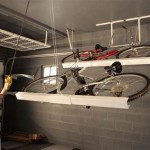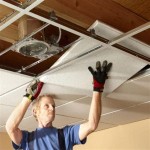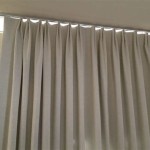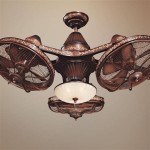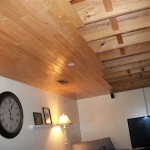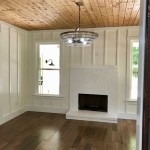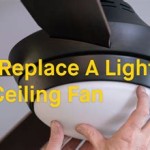```html
Insulating Basement Ceiling For Noise Reduction
Noise pollution in residential environments can significantly impact the quality of life. Basements, often used as recreational spaces, home offices, or bedrooms, are particularly susceptible to noise transmission from the floor above. Insulating the basement ceiling is a highly effective strategy for reducing sound levels and enhancing the overall comfort of the space. This article details the various methods, materials, and considerations involved in insulating a basement ceiling for optimal noise reduction.
Understanding Sound Transmission
Before embarking on an insulation project, it’s crucial to understand how sound travels and how insulation can impede its progress. Sound, in its simplest form, is energy that travels in waves. These waves can travel through air, solids, and liquids. In buildings, sound primarily transmits through two mechanisms: airborne transmission and impact transmission.
Airborne transmission refers to sound waves traveling through the air and impacting a surface, causing it to vibrate and radiate sound on the other side. Examples include conversations, music, and television noise emanating from the floor above. Impact transmission, on the other hand, occurs when an object directly strikes a surface, causing vibrations that propagate through the structure. Footsteps, dropped objects, and furniture movement are typical sources of impact noise.
Insulation works by absorbing sound energy and reducing the amplitude of sound waves. Different types of insulation possess varying sound absorption properties. By selecting the appropriate materials and installation techniques, one can effectively minimize both airborne and impact sound transmission through the basement ceiling.
Choosing the Right Insulation Materials
Several insulation materials are suitable for basement ceiling applications, each offering different levels of noise reduction and varying costs. Key considerations when selecting materials include density, sound absorption coefficient, fire resistance, and moisture resistance.
Fiberglass Insulation: Fiberglass is a widely used and cost-effective insulation material. It consists of fine glass fibers that trap air, creating a thermal and acoustic barrier. Fiberglass batts and rolls are easy to install between joists and offer moderate sound absorption. However, fiberglass is more effective at absorbing airborne noise than impact noise. For enhanced soundproofing, dense fiberglass batts are preferable to standard ones.
Mineral Wool Insulation: Mineral wool, also known as rock wool or slag wool, is another fibrous insulation material derived from recycled materials. It possesses superior sound absorption characteristics compared to fiberglass due to its higher density and more complex fiber structure. Mineral wool is also fire-resistant and less susceptible to moisture damage, making it a durable and effective choice for basement ceiling insulation.
Acoustic Panels: Acoustic panels are specifically designed for sound absorption and are often used in home theaters, recording studios, and other spaces where noise control is paramount. These panels are typically made from fiberglass, mineral wool, or recycled cotton and are covered with fabric. While acoustic panels are effective at absorbing sound, they are typically surface-mounted and may not be ideal for insulating the entire basement ceiling cavity.
Spray Foam Insulation: Spray foam insulation offers excellent thermal and acoustic performance. It expands to fill gaps and crevices, creating an airtight seal that minimizes air leakage and maximizes sound isolation. There are two main types of spray foam: open-cell and closed-cell. Closed-cell foam is denser and provides better soundproofing than open-cell foam. However, spray foam insulation is generally more expensive than other options and requires professional installation.
Resilient Channels: Resilient channels are metal strips that are attached to the ceiling joists and used to suspend the drywall. They decouple the drywall from the joists, reducing the transmission of vibrations and impact noise. Resilient channels should always be used in conjunction with insulation for optimal soundproofing performance.
Installation Techniques for Optimal Noise Reduction
The effectiveness of basement ceiling insulation hinges not only on the choice of materials but also on the proper installation techniques. Careful attention to detail and adherence to best practices are essential for achieving optimal noise reduction.
Preparing the Ceiling Cavity: Before installing insulation, inspect the ceiling cavity for any wiring, plumbing, or ductwork. These obstructions may need to be relocated or secured to prevent them from interfering with the insulation. Seal any air leaks or gaps in the ceiling with caulk or expanding foam to prevent sound from flanking the insulation.
Installing Batt or Roll Insulation: When installing fiberglass or mineral wool batts, ensure that they fit snugly between the joists without being compressed. Compression reduces the insulation's effectiveness. Cut the batts to the appropriate length and friction-fit them into place. Wear protective gear, including gloves, a dust mask, and eye protection, when handling fiberglass or mineral wool insulation.
Applying Spray Foam Insulation: Spray foam insulation should be installed by a qualified professional. The applicator will spray the foam into the ceiling cavity, allowing it to expand and fill the space completely. Proper ventilation is essential during spray foam installation to prevent the buildup of harmful fumes.
Installing Resilient Channels: Resilient channels are typically installed perpendicular to the ceiling joists, spaced 16 or 24 inches apart. Attach the channels to the joists using screws, ensuring that they are properly aligned and level. The drywall will then be attached to the resilient channels, creating a decoupled ceiling assembly.
Sealing Gaps and Cracks: Even with the best insulation, sound can still leak through gaps and cracks in the ceiling. Seal any remaining gaps around pipes, wires, and light fixtures with acoustical caulk. Consider using soundproof sealant around the perimeter of the drywall to further reduce sound transmission.
Addressing Impact Noise: While insulation helps to absorb airborne noise, it is less effective at reducing impact noise. To minimize impact noise transmission, consider installing a layer of soundproof underlayment beneath the flooring on the floor above the basement. This underlayment can absorb vibrations and reduce the amount of impact noise that is transmitted through the structure.
Addressing Specific Noise Concerns
The specific type of noise that needs to be mitigated should influence the choice of materials and installation methods. For instance, if the primary concern is impact noise from footsteps, resilient channels and a soundproof underlayment on the floor above will be particularly beneficial. If the main issue is airborne noise from conversations or music, dense insulation materials like mineral wool or closed-cell spray foam will be more effective.
Low-Frequency Noise: Low-frequency noise, such as bass from music or home theaters, is particularly challenging to block. It requires more mass and damping to effectively attenuate. Consider using multiple layers of drywall with a damping compound between them to increase the mass of the ceiling assembly. Also, ensure that the ceiling is tightly sealed to prevent low-frequency sound from leaking through gaps.
Flanking Paths: Sound can also travel through flanking paths, which are routes that bypass the insulation. For example, sound can travel through walls, ducts, or pipes that connect the basement to the floor above. To address flanking paths, seal any gaps or cracks in these areas with acoustical caulk or expanding foam. Consider wrapping ducts and pipes with sound-dampening materials to further reduce noise transmission.
Existing Ceiling Considerations: If the basement already has a finished ceiling, removing it to install insulation can be a significant undertaking. In some cases, it may be possible to inject insulation into the ceiling cavity through small holes. However, this method may not provide as effective soundproofing as a complete insulation installation. Another option is to install a suspended ceiling with acoustic tiles, which can provide some degree of sound absorption.
Ventilation and Moisture Control: When insulating a basement ceiling, it is essential to maintain proper ventilation and moisture control to prevent mold growth and other problems. Ensure that the insulation does not block any ventilation openings or create a moisture trap. Consider installing a vapor barrier on the warm side of the insulation to prevent moisture from migrating into the ceiling cavity.
Fire Safety: Always choose insulation materials that meet local fire safety codes. Some insulation materials are more fire-resistant than others. Ensure that the insulation is properly installed to prevent it from becoming a fire hazard. Check local building codes for specific requirements regarding fire-resistant insulation in basements.
By carefully considering the type of noise that needs to be mitigated, selecting the appropriate insulation materials, and following proper installation techniques, one can effectively insulate a basement ceiling for optimal noise reduction and create a more comfortable and peaceful living environment.
```
Soundproofing Ceilings How To Soundproof A Ceiling

Nova Basement Remodeling Soundproofing In

How To Soundproof A Basement Ceiling

Bungled Basement Soundproofing The Expert

Best Insulation For Soundproofing Your Ceiling Renoviso

Botched Duplex Soundproofing The Expert

Walls Sound Proofing Basement Remodeling Ceiling

What To Know About Soundproofing A Basement Ceiling

7 Ways To Soundproof A Ceiling That Really Work

Should I Insulate My Basement Ceiling And Walls Aire Serv
Related Posts


